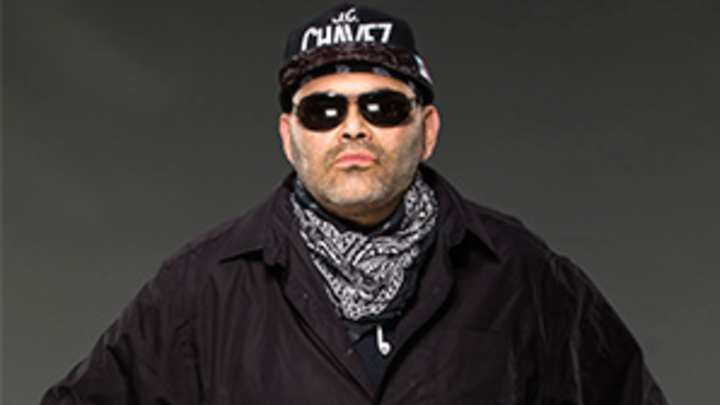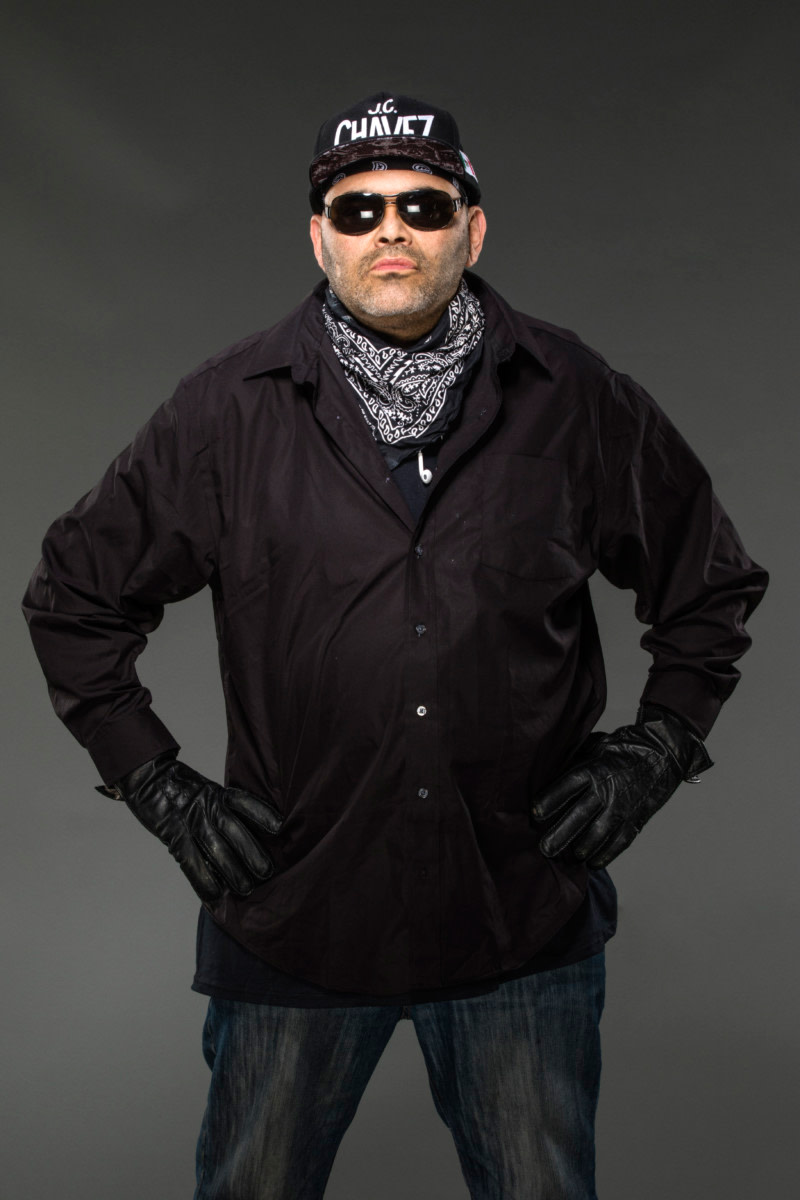Konnan on Working With Aro Lucha, Max Moon and His Frustration with Eric Bischoff and WCW

Aro Lucha returns to action this weekend, with a show tonight in Beaumont, Texas and a follow-up tomorrow in Humble, Texas.
The wrestling start-up has hired Mexican wrestling legend Konnan as its head of creative, so it should come as little surprise that, starting this April, he is bringing in long-time friend Rey Mysterio to headline shows for the company.
Humble, be our Aro Lucha Valentine this Saturday at the Humble Civic Arena! Hurry and Get your spot: https://t.co/uLDwcD7XDx pic.twitter.com/7TLXBW5AnG
— Aro Lucha (@AroLucha) February 14, 2018
As Aro Lucha looks to make an imprint in the North American wrestling community, it is a worthwhile endeavor to dig deeper into the history of Konnan.
Konnan–54-year-old Charles “Carlos” Ashenoff–is part of a dwindling number of wrestling luminaries who drew money outside of the WWE. Although he was born just outside of Boston, Massachusetts, Konnan was raised in Miami, Florida and brought the lavish lifestyle of Miami Beach to the wrestling ring with flamboyant moves and flashy ring attire.
While most know Konnan as a star in Mexico and as a piece of the New World Order in WCW, his work as a talented scout will forever remain a major part of his legacy.
Konnan’ style in the ring was only exceeded by his substance in the booking office. Despite his acumen for the business, every chapter of Konnan’s wrestling story seemingly ends in the same fashion: with a rift between himself and his employer. This has occurred with CMLL, AAA, WWE, Impact, and, more recently, The Crash.
“I didn’t grow up wanting to be a wrestler and I wasn’t the son of a wrestler, so I wasn’t programed to think the way most promoters were programed to think,” said Konnan. “You’re loyal to your family, not a company, but that’s what you’re supposed to do in wrestling.
“Companies are loyal to you as long as it is convenient to their interests. Why wouldn’t I think the same?”
Right from the onset of his career, Konnan’s outspokenness invited controversy. Even to this day, his unwillingness to conform still infuriates executives, including rankling feathers of some highly-perched men and women at the WWE office in Stamford, Connecticut.
“Don’t ask for my opinion if you don’t want to hear what I have to say,” said Konnan. “I’m not a stockholder. Companies play those mind games and a lot of people are afraid to leave promotions. You saw it in Mexico with CMLL and AAA, and you saw a little of it with WWE and WCW in the ‘90s with who was loyal and who wasn’t loyal to a company.”
Similar to the rise of Hulk Hogan’s popularity in the 1980s, Konnan benefitted from opportune timing in Mexico.
Deemed too violent for television, wrestling had not been aired on television in Mexico for three decades. When Konnan arrived in CMLL, he was fortunate that the country was set to televise wrestling for the first time in 30 years.

“CMLL was televised on channel 2, which was the equivalent of ABC, NBC, and CBS together,” said Konnan. “That’s how powerful that station was, and they aired the wrestling at noon on Sundays. People were either getting up from partying the night before or getting out of church, and the timing was just perfect.”
CMLL quickly grew into one of the hottest promotions in the world, with new stars like Konnan emerging as the company’s popularity exploded.
But fame and fortune were not enough for Konnan.
“I wanted to do the things that hadn’t been done before,” said Konnan, offering a brief glimpse into his competitive soul. “I wanted to break the paradigm that CMLL had been stuck in.”
Konnan greatly admired Antonio Pena, who was the former head booker for CMLL. Pena had designs of breaking free from CMLL, a company that was created in 1933 and resolute in its tradition. Pena had the audacity to envision a new company, AAA, that would have roots that extended to the United States.
“So Antonio Pena spoke with me and another wrestler, Octagon, and said, ‘If you want to leave with me, you can,’” explained Konnan. “But he said, ‘Know that, if you leave, you’ll never be able to work at CMLL again.’ And he was right. Mexico is still archaic in that, if you leave a promotion, they take it personally won’t let you back. They still look at me like I’m a traitor. I’ve never been able to work there again.
“Imagine if you left the Boston Red Sox and they told you, if you leave, you can never work in Major League Baseball again. Perplexing but true in wrestling.”
That is not to say Konnan regretted the decision to leave CMLL for the upstart AAA.
Despite CMLL using its resources to block any growth for AAA, the first TripleMania in 1993 broke the all-time gate record in Mexico, which is a record that still stands.
In-between his work in CMLL and AAA was a brief sojourn–with seemingly everlasting effects–to Vince McMahon’s WWE.
McMahon and Konnan collaborated to concoct a robot-themed character named Max Moon, set to redefine wrestling in WWE.
“Max Moon was a robot that had a lot of pieces to it,” said Konnan. “I would have to fly from Mexico to LA, then pick up the robot in LA, and I had to carry it everywhere.
“At this point, I was blowing up in Mexico and I just started on a Mexican soap opera. Why did I need to go to WWE? I was making good money and doing what I wanted, so I just stopped showing up for TV.”
Konnan was familiar with wrestling politics in Mexico, which could be intensely personal, but he also learned lessons from his stay in McMahon’s empire.
“They called me one day and said, ‘You’re fired,’” said Konnan. “I said, ‘OK, bye.’ It wasn’t a big deal to me. I didn’t grow up watching WWE or wanting to be there. Plus, I was already a star in Mexico. Much like what happened after I left CMLL, the WWE has held a grudge for a long time against me.”
The flirtation with success in the U.S. did not end with his foray in WWE.
Konnan was vital to the wave of lucha in the early 1990’s that found a way to be commercially viable on a large scale like never before on American soil.
Despite his status as a bona fide draw in Mexico, Konnan’s style was unproven–and far different from Hulkamania in the often cartoonish realm of Vince McMahon’s WWE–in the U.S.
“There were all these Mexicans that were born in Mexico and living in the United States, but they didn’t have wrestling they could understand,” said Konnan. “So we brought it to them.”
AAA’s first-ever event in California, the August 28, 1993 “La Revencha” card at the Los Angeles Memorial Sports Arena, was a sell-out of 17,500 that saw Konnan exact revenge upon both Jake Roberts and Cien Caras in a triangle match. Thousands were turned away at the door, as the demand significantly outdrew the supply.
Week in Wrestling: WWE’s WrestleMania Plan for Ronda Rousey; Hulk Hogan’s Crazy NJPW Demand
“LA is full of Mexicans,” said Konnan. “Why wouldn’t we do well in LA?”
Konnan kept pushing. He helped bring lucha libre to non-traditional markets like Chicago and New York, serving as the architect for the last real wave of lucha in the States.
His instincts, along with a natural ability to earmark talent and set them in motion to be successful, have allowed for continued success in wrestling for the past three decades. His greatest strength may be as a talent scout, cultivating talent from Rey Mysterio to Pentagon.
“I respect anyone that has drawn money,” said Konnan. “It isn’t easy to do. And you don’t always know who is going to be a star. Sometimes it surprises you. Who ever thought Mick Foley would draw money? But he had the things that people liked. He was charismatic, he had great matches, he was so likable.
“I remember sitting down with Eric Bischoff when I was in WCW, and listened to him bury Mick. I disagreed. It’s not like what the Kliq had you believe, where guys had to want to be like you and girls needed to want to f--- you. That had changed. It’s just like when I heard guys say, ‘Oh, my son can beat up Rey Mysterio.’ That’s not what your son is thinking when he watches Rey. Your son is thinking, ‘This little guy is dope.’ Rey has drawn a lot of money. At the end of the day, I have a lot of respect for guys who have drawn because I know how hard it is.”
Branches of Konnan’s learning tree exist all over the business. He serves as an unofficial coach for wrestlers all over the industry, always gravitating to the youth.
“There is something I love about recognizing raw talent, cultivating it, then watching it mature and become what it could be,” said Konnan, whose disciples and friends he helped include the likes of Rey Mysterio, Psicosis, Juventud Guerrera, and Eddie Guerrero, well as more current stars in Sammy Guevara, El Hijo del Fantasma, LAX, Taya Valkerie, and Homicide.
“Some people don’t know how great they can be unless you tell them and show them how to be great,” said Konnan. “So many young talent just need someone to believe in them and show them the right way to do things.”
Wrestling is in Konnan’s blood, and his podcast – Keepin’ It 100 with Konnan–is an entertaining look at the business that encourages listeners to think in new ways about the product they are consuming. It is also a source of entertainment, as Konnan is holding firm in his Super Bowl bet victory over Disco Inferno (“We had a bet where the loser has to wear a dress on the Jericho Cruise,” said Konnan. “This is a reminder for him not to renege on that bet.”).
Konnan is also putting his power to good use with Aro Lucha.
“I’ve always wanted to bring lucha to the United States, but I haven’t been able to yet,” said Konnan. “I was in Lucha Underground, but they weren’t able to do what I thought they could have done. We can do it with Aro Lucha. It’s pure excitement and a lot of fun.”
Konnan confirmed that he is currently negotiating a television deal, and promised Aro Lucha will have a platform to show their wrestling during the year of 2018.
The Aro Lucha shows include a variety of stars, including Blue Demon, Maximo, John Morrison, Low Key, MVP, Sammy Guevara, and Shane “Hurricane” Helms, who was last seen at WWE’s Royal Rumble.
“The biggest pops of the night were Helms and Rey, and they’re both with Aro Lucha,” said Konnan. “Rey starts on April 28, and he made more views on YouTube from the Royal Rumble than Ronda Rousey or Trish Stratus. Rey is a legend and a lucha god.”
Konnan listened to the crowd response at the Rumble, and his willingness to listen to fans could serve as a key ingredient for Aro Lucha’s success.
“I listen to the people,” said Konnan. “Promotions think they’re smarter than the fans, but that’s when they get in trouble. This is for the fans. If you’re not listening to them, you’re not doing your job.
“Roman Reigns still gets booed to this day. That’s the fans saying, ‘You didn’t give us what we wanted and we have long memories. So this is your guy, Roman Reigns? We’re going to boo him.’ The fans, for many years, have been given things they don’t like. This is not a knock on WWE, because they’re the best at what they do, but it’s hard to sit through Raw. It’s three monotonous hours, and they don’t give the people what they want all the time. Aro Lucha goes out and entertains the fans.”
Konnan is still asked if he will ever work for WWE. He has no current plans, as his podcast, creative work with Aro Lucha, and on-air work at Impact complete his schedule (“Right now,” Konnan said, “I’m very happy working with Impact, which wasn’t always the case before. I believe in the new regime, they are easy to talk to and collaborate with, and I want to help them exonerate themselves from past mistakes that still haunt the company to this day.”). No matter if the fit is there–Konnan could be an incredible asset as a talent scout–the bottom line is that mavericks like Konnan do not work for the house, they’re too busy building their own.
“I wouldn’t fit in there,” said Konnan. “They’re too corporate for me, and I’m like Al Davis. I’m a rebel, I like to do my own sh-- , I don’t like to conform.
“I’m too blunt for my own good, but that’s who I am. I’m not running for mayor and I’m not trying to be loved by everybody. Friends like Rey Mysterio know who I am. X-Pac knows who I am, so does Norman Smiley. They know I’m hot-tempered, passionate, and their friend. But no, I don’t think I’d play well there.”
Justin Barrasso can be reached at JBarrasso@gmail.com. Follow him on Twitter @JustinBarrasso.
